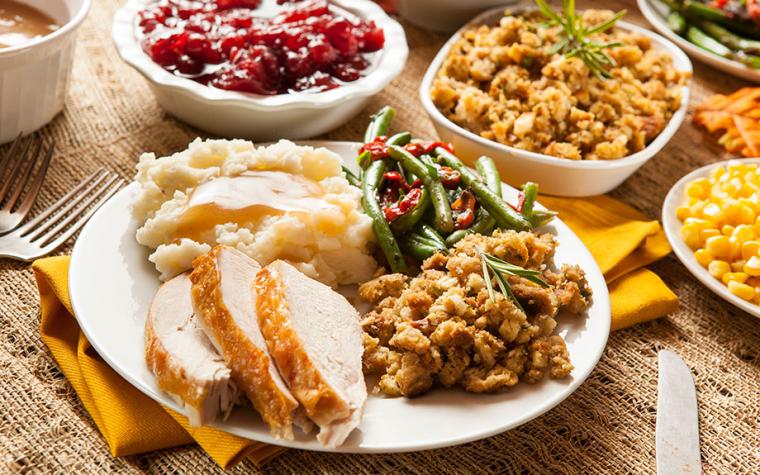Keeping your holiday meal safe and delicious.
COLUMBIA, Mo. – The traditional Thanksgiving feast is one of the most anticipated meals of the year. But amid all the excitement, food safety can often be overlooked, turning a joyful gathering into an unpleasant experience. But by following a few key food safety practices, you can keep the Thanksgiving meal both delicious and safe for everyone at the table.
Preparation
Start with the basics: purchasing and handling food safely. Wait until the end of your shopping trip to buy perishable foods such as meat, poultry and dairy, and make sure to store them in your refrigerator or freezer as soon as you get home. Keep raw meat and poultry separate from ready-to-eat foods to avoid cross-contamination.
Before you begin cooking, wash your hands thoroughly with warm water and soap for at least 20 seconds. Clean all surfaces, utensils and cutting boards that come in contact with raw meat or poultry. Lastly, avoid rinsing the turkey in the sink, as this can spread bacteria to nearby surfaces, leading to cross-contamination.
Thawing the turkey
Improper thawing is one of the most common Thanksgiving food safety mistakes. The safest way to thaw a frozen turkey is in the refrigerator, allowing 24 hours of thawing time for every 4 to 5 pounds of bird. Keep it in a tray or pan to catch any liquid or juices that may leak. If you’re short on time, the turkey can also be thawed in cold water, but the water must be changed every 30 minutes to ensure safety. Allow about 30 minutes of thawing per pound. Never thaw turkey on the countertop, as bacteria can grow rapidly in the temperature “danger zone” between 40 and 140 degrees Fahrenheit (4-60 degrees Celsius).
Cooking to the right temperature
Color is not a reliable indicator of doneness. Use a food thermometer to make sure your turkey reaches a safe minimum internal temperature of 165 F (74 C). Insert the thermometer into the thickest part of the breast, the innermost part of the thigh and the wing joint to verify accuracy. If you’re cooking stuffing inside the turkey, make sure the center of the stuffing also reaches 165 F (74 C). Alternatively, cook stuffing separately for greater safety.
Keeping hot foods hot and cold foods cold
Once your feast is ready, time and temperature are key. Keep hot foods at or above 140 F (60 C), while cold foods should remain below 40 F (4 C). Avoid letting any cooked food sit out at room temperature for more than two hours (or one hour if the room is warmer than 90 F/32 C). If serving buffet-style, keep hot dishes in slow cookers or chafing dishes and cold items over ice to maintain safe temperatures.
Proper storage of leftovers
Thanksgiving leftovers are often as cherished as the meal itself, but improper handling can lead to foodborne illness.
- Refrigerate leftovers promptly: Divide large portions into smaller, shallow containers for quicker cooling. Refrigerate or freeze all leftovers within two hours of serving.
- Use within 3 to 4 days: Most refrigerated leftovers are safe for up to four days. If you won’t use them soon, freeze them to extend their life.
- Reheat safely: When reheating leftovers, make sure they reach an internal temperature of 165 F (74 C) before serving. Bring sauces, soups and gravies to a rolling boil before serving.
- Avoid reheating multiple times: Only reheat what you plan to eat immediately to preserve flavor and reduce bacterial risk.
Don’t forget the desserts
Custard-based or cream pies (like pumpkin or pecan pie) should be refrigerated after cooling. They contain eggs and dairy that can spoil quickly if left out at room temperature for more than two hours.
